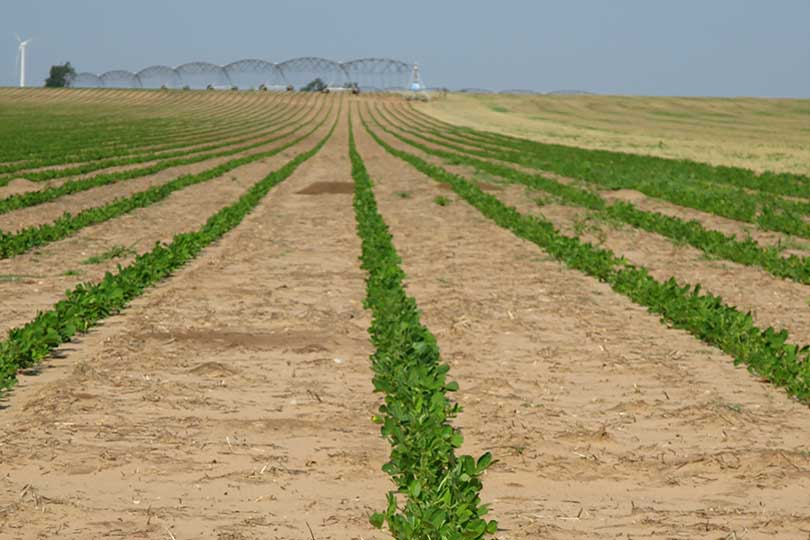By Jessica Domel
Multimedia Editor
Higher cotton prices could mean fewer peanuts in Texas fields this year.
Peanut acreage is forecast to be down 21 percent this year to 240,000, according to the U.S. Department of Agriculture’s National Agricultural Statistics Service (USDA NASS) April Prospective Plantings report.
Although a decrease is projected by NASS, their projection for acreage could still be too high. Texas farmers typically grow between 170,000 to 190,000 acres of peanuts each year.
“I think that’s more of a realistic number,” Shelly Nutt, executive director of Texas Peanut Producers, said.
In 2015, about 170,000 acres of peanuts were grown in Texas. That number climbed to 305,000 in 2016.
“A whole lot of people planted peanuts rather than cotton because cotton prices were down,” Nutt said. “Cotton herbicides weren’t affected, so peanuts worked well to help with those issues, but then farmers also planted peanuts to take advantage of the PLC program understandably. When they put a pencil to it, they could plant peanuts and make more money.”
This year, cotton prices are back up and there are new herbicides to help cotton farmers deal with resistant plants. Peanut prices are also higher now, which would make any farm bill peanut payments very low, if they’re available at all.
Those factors combined have led many farmers back to cotton or other crops and away from peanuts.
Although it’s still a bit too early to nail down the precise number of peanuts that will be grown in Texas this year, Nutt said she’s hopeful farmers planned ahead and contracted their peanuts early.
“What I’m hearing now from my friends that are marketing peanuts is that the market is very quiet. Where China had already stepped in and started buying up their peanuts this time last year, China is very, very quiet. Everyone is waiting to see how Argentina’s harvest turns out. Right now, the Argentine harvest looks fine,” Nutt said.
If the Chinese peanut harvest is poor, they’ll need to import peanuts. If the Argentine or Chinese harvests go well, the demand for Texas-grown peanuts will be lower, which will affect the price.
Peanut farmers this year could also face some pest pressure, but as it’s still early in the season, it’s unclear what growers will face.
“I have some real concerns because we had such a mild winter. We never really had those long-term freezes that we like to have where we get our soil temps down below freezing. There’s definitely some concern that we could see some disease and pest pressure that we’re not used to,” Nutt said. “Hopefully, they won’t see it, but there’s always that concern.”
The majority of Texas peanuts are grown within 90 miles of Lubbock. Gaines County is the top peanut-producing county in the United States.
There are also pockets of peanut growers in the northeast Panhandle, near Vernon, south of San Antonio and in the Comanche County area.
Farmers typically begin planting peanuts the first week of May. Harvest will occur in October and must be finished before the first freeze.
Texas is the only state in the nation that grows all four peanut varieties: Runner, Valencia, Spanish and Virginia.
The Lone Star State is also unique because farmers here are able to grow organic peanuts in arid West Texas.

